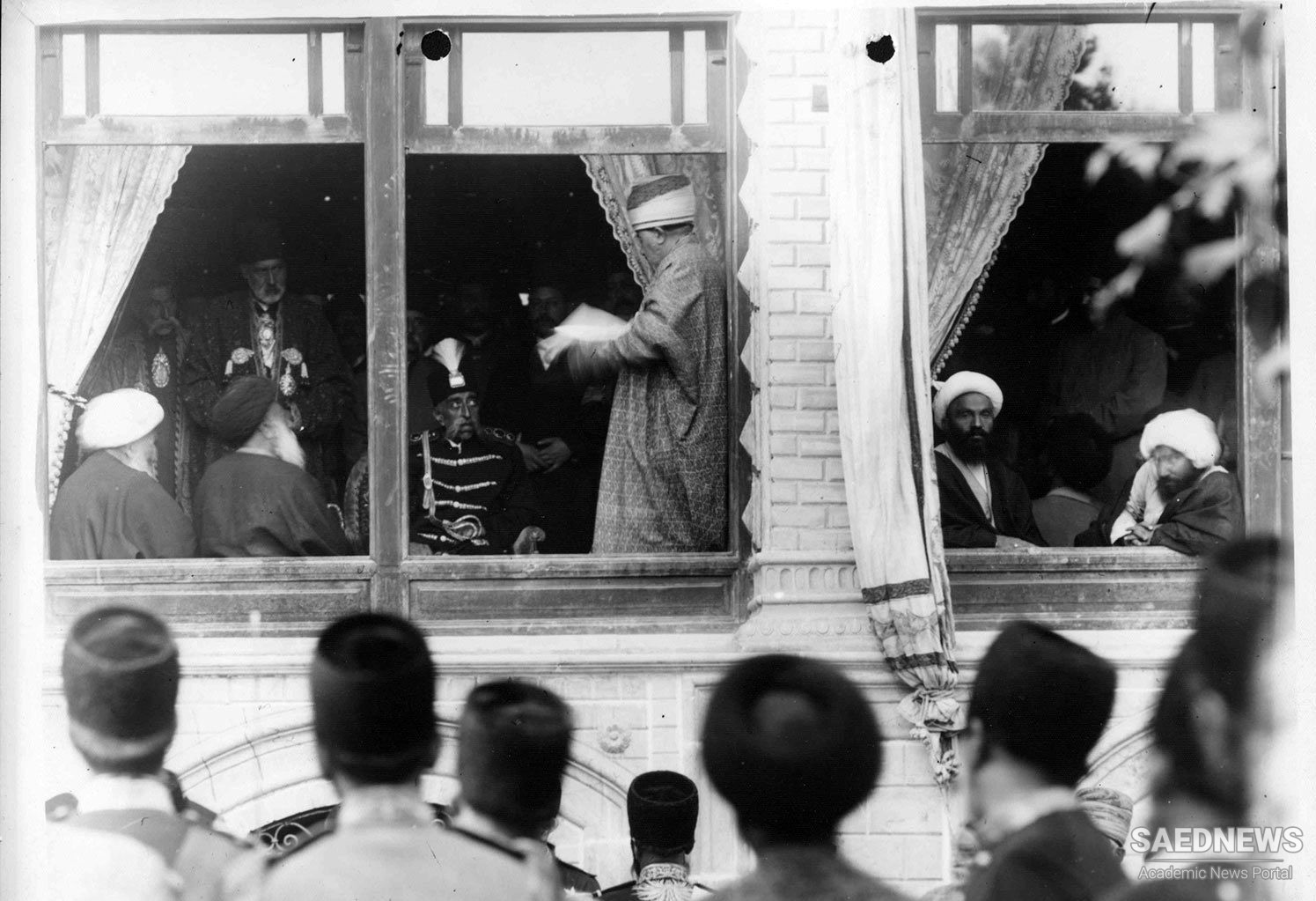Beyond Nuri and his supporters, the infant constitutional regime had to face the consequences of a new alliance between its European neighbors. In August 1907, Russia and Britain concluded an agreement that recognized two zones of influence for the powers in northern and southern Iran, with the middle region declared neutral. This was the first time such an agreement had replaced the old power rivalries. The agreement reaffirmed the powers’ traditional guarantees for the Qajar throne without acknowledging the Majles or the new constitutional process. This generated new anxieties and, as it turned out, contributed to the precarious nature of the emerging order and, a year later, to the coup of June 1908 that destroyed the Majles and suspended the constitution. The events that unfolded then gave the Iranians little comfort in the European powers’ assurances that they would respect Iran’s political sovereignty and territorial integrity.
The first Majles was composed of deputies with little legislative experience and misperceptions about how the Majles—and indeed the entire constitutional system—was to function. Among the deputies, those of the Azarbaijan contingent were the most influential members. From the outset a few deputies, most significantly, Hasan Taqizadeh (1878–1970), a young charismatic orator from Tabriz with a radical agenda, came to dominate the debates. Born in Nakhijevan, the southern autonomous region in today’s Republic of Azerbaijan near the Iranian border) to a family of Shi‘i local clergy, Taqizadeh started as a seminarian in Tabriz but, soon becoming critical of traditional madrasa schooling, turned toward modern sciences and Western political thought. With the help of his cohorts he established a small lending library in Tabriz, a means of self-education also aimed to enlighten his fellow citizens. He later left for Beirut and Cairo, where, still in clerical attire, he was further exposed to current trends of secular thought and nationalism. He also perfected his Arabic and learned some English and French. He returned to Tabriz at the beginning of the constitutional era and was designated a deputy from Azarbaijan.
The Azarbaijan contingent was in part backed by the semi-clandestine socialist circle in Tabriz and by the Iranian émigré community in the Caucasus. Many were dislocated peasants from Iranian Azarbaijan, but there were also enthusiastic Iranian merchants and wealthy industrialists who offered their moral and financial support. Other deputies from the provinces, including Isfahan, Kerman, Fars, and Gilan, added to the Majles’ credibility as the first nationwide legislative body created by the will of the people. The two constitutionalist mojtaheds, referred to as the “two glowing starts” (nurayn-e nayyerain), attended the Majles session not only as representatives of the ulama class but also as surrogates for the so-called recognized religious minorities. Only in the second Majles, after 1909, was a Zoroastrian dignitary elected to represent the long-persecuted followers of Iran’s indigenous religion. The Jewish and Christian communities also appointed representatives, but the Babi Azalis or Baha’is were never elevated beyond the label of “despicable heresy.” Neither were women considered worthy of standing as deputies or even being part of the electorate.


 Parliament, Constitution and the Rule of Law
Parliament, Constitution and the Rule of Law














































